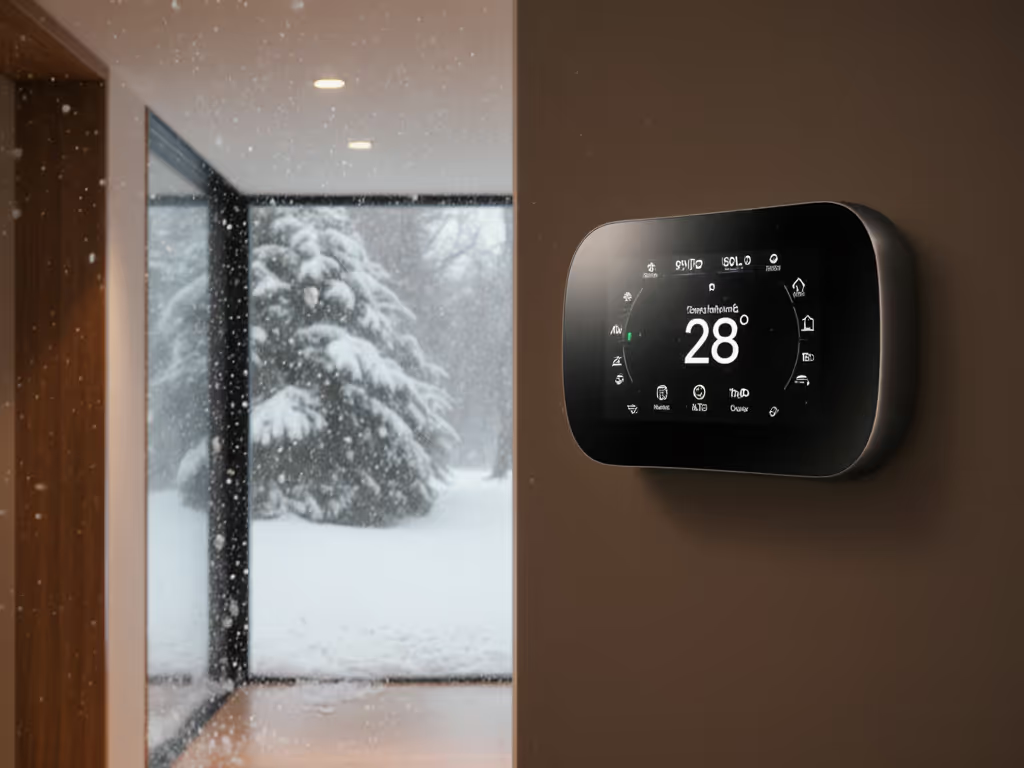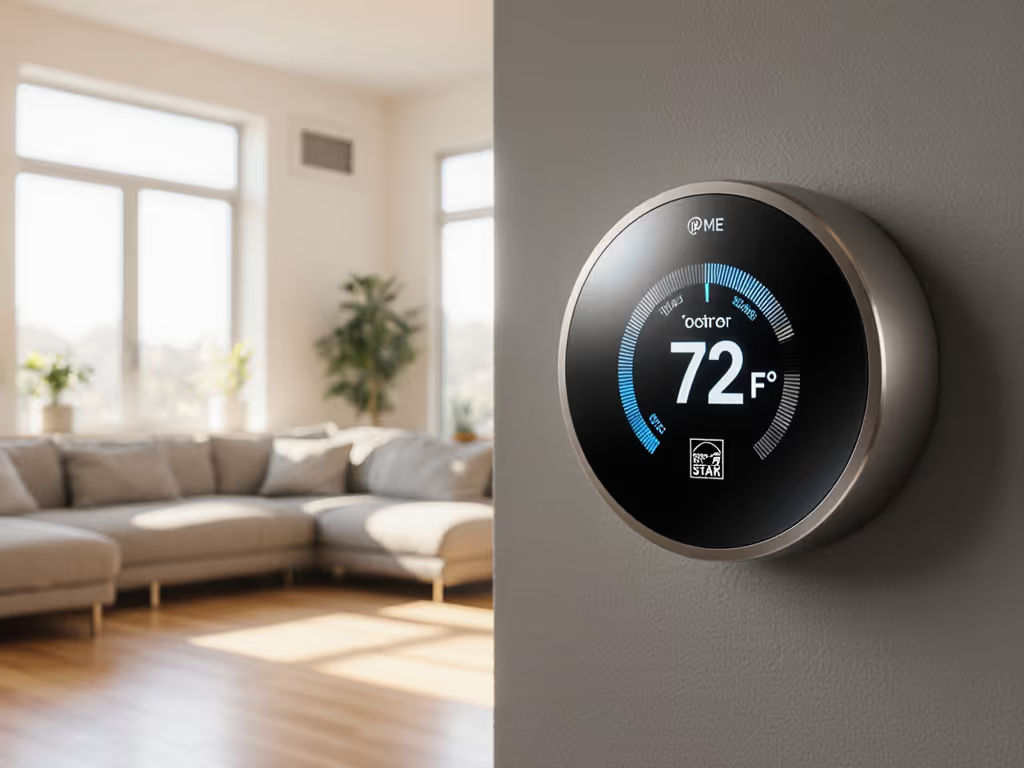
Best Programmable Thermostat: Energy Savings Without Guesswork
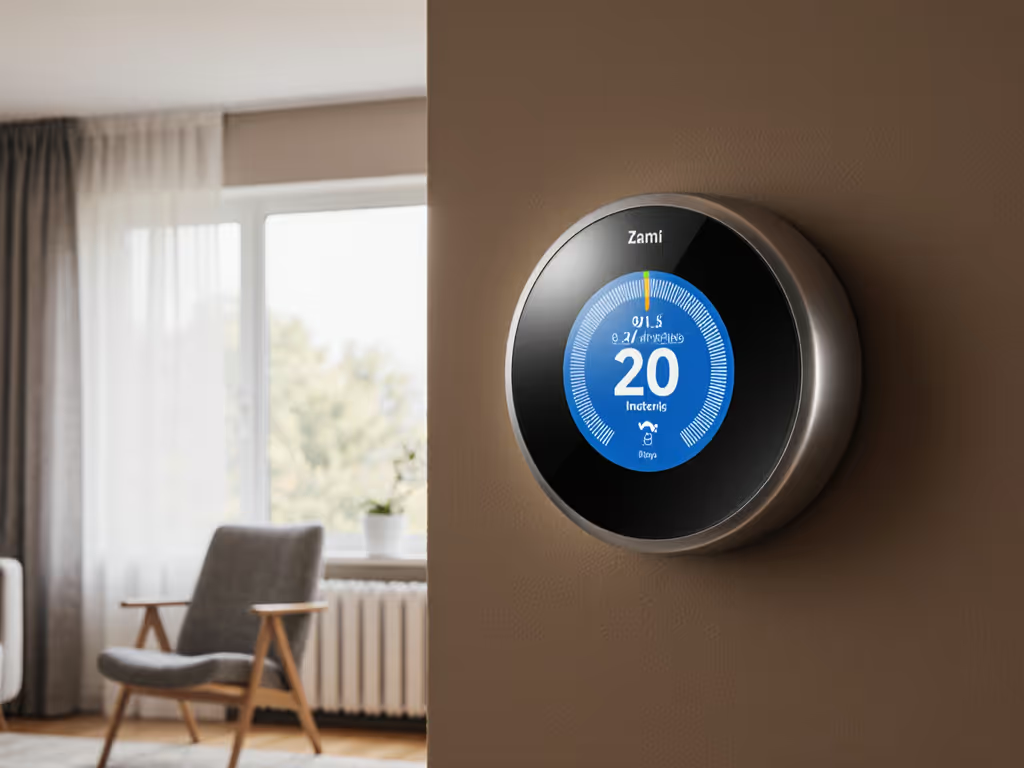
Finding the best programmable thermostat isn't about flashy apps or learning algorithms, it's about guaranteed compatibility, bulletproof operation, and real thermostat energy savings that cut costs without frustrating tenants or triggering midnight service calls. As a property manager standardizing systems across 50+ units, I've seen too many landlords dazzled by "smart" promises only to face returns, rewiring nightmares, and soaring utility bills. The right thermostat pays for itself in fewer service tickets and happier occupants. Fewer 2 a.m. calls are real ROI you can feel.
Why "Smart" Often Fails in Real-World Rentals
The Compatibility Trap
Most multi-unit buildings share one critical flaw: mixed HVAC systems. You might have gas furnaces in ground-floor units, heat pumps upstairs, and baseboard heaters in converted attics, all with mismatched wiring. That chic touchscreen thermostat praised in a smart thermostat review? It's useless if your vintage boiler lacks a C-wire or your heat pump's O/B polarity is reversed. Tenant complaints spike when:
- Learning algorithms override schedules during extreme weather (leaving occupants shivering)
- Geofencing fails on older phones, disabling occupied-mode heating
- No physical lockouts let tenants blast AUX heat all winter
I took over a 12-unit building where three "smart" thermostats had been returned twice each. The culprit? Uncertified wiring and incompatible staging logic, not user error.
Wiring Woes That Break Budgets
Here's where DIY installations implode. A programmable thermostat seems simple until you confront:
- Mislabeled wires (is that really your C-wire, or just a stray copper strand?)
- 24V vs. line-voltage mismatches frying electronics in baseboard units
- Missing O/B terminals scrambling heat-pump reversal cycles
One landlord wired a $150 smart thermostat into a 120V radiant system. Result? Smoked PCBs and $300 in emergency HVAC repairs. Budget breakdowns show proper compatibility checks prevent 90% of these disasters. Not sure when to call a pro? Read our DIY vs pro wiring complexity guide before you touch a terminal.
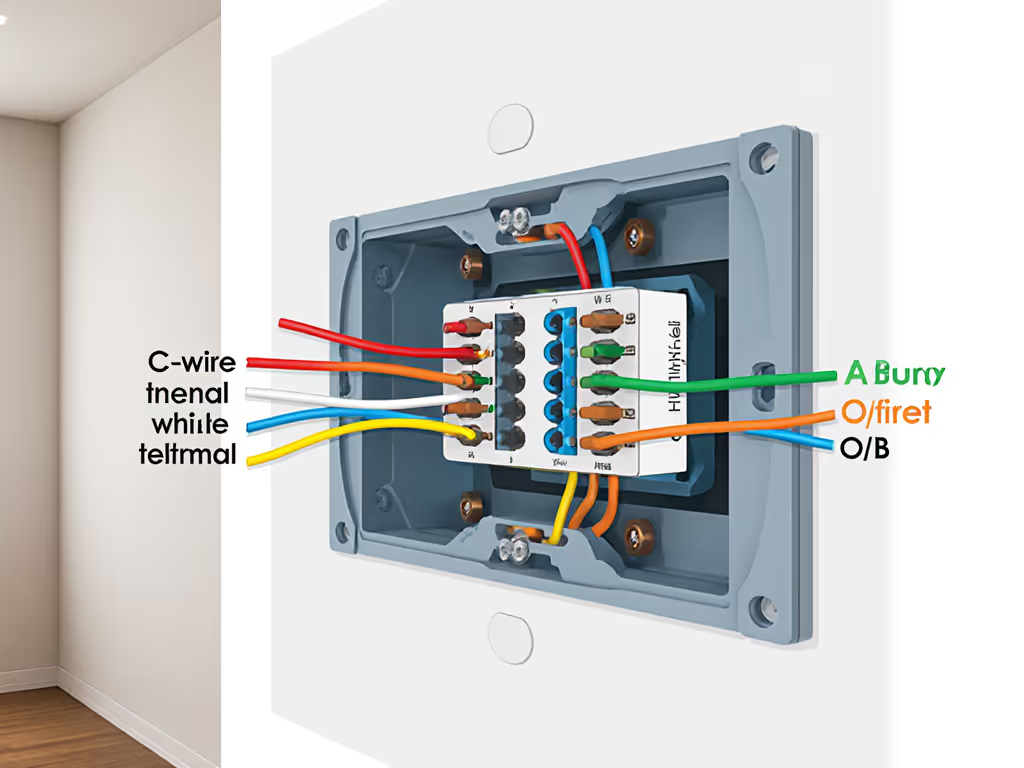
The Property Manager’s 3-Step Audit for Zero-Stress Savings
Step 1: Run a Quick-Check Compatibility Audit (Before You Buy)
Forget star ratings. Do this before comparing models:
- Power Check: Shut off HVAC power. Remove old thermostat. Verify:
- Is there a blue C-wire connected? (Critical for most smart thermostats)
- Is your system 24V (standard furnaces) or line-voltage (120V/240V baseboards)?
- Heat Type Check: Document:
- Heat pump? Note O/B terminal position (O = cool active, B = heat active)
- Dual-fuel? Confirm W2/AUX terminal presence
- Boiler/radiant? Check for 24V transformer
- Stage Check: Trace wires to furnace:
- Single-stage? Only Y1 and W1 used
- Two-stage? Y2/W2 present
No C-wire? Skip Wi-Fi models. Opt for battery-powered programmables like the Honeywell Vision Pro 8000. Thermostat type comparison charts are worthless if your wiring isn't clarified first. Use our C-wire and HVAC compatibility guide to verify power, stages, and heat-pump polarity the right way.
Step 2: Prioritize Lockout Features Over "Smart" Gimmicks
Tenant-proofing starts with ironclad lockouts. Demand these non-negotiables:
- Permanent temperature limits (e.g., max 72°F in winter to prevent AUX heat abuse)
- Schedule override lockouts (no 4-hour "vacation" mode resets)
- Manual mode disable (stops tenants from bypassing schedules)
Post-audit in my building, we standardized on two models: one for heat pumps (with enforced O/B polarity), one for furnaces (with AUX heat lockout). Tenant complaints halved. Pro tip: Test all lockouts during installation, don't assume settings stick.
Step 3: Validate Utility Rebates Before Installation
Don't bank on savings until you verify:
- Is the thermostat ENERGY STAR certified? (Check model number suffixes, e.g., RTH8560D vs. RTH8560)
- Does your utility's exact rebate page list this variant? (Many exclude Wi-Fi editions)
- Are your HVAC specs covered? (Some rebates require 2-stage systems)
One client missed a $75 rebate because his "energy-saving thermostat" wasn't on his utility's current approved list. To avoid that, start with our region-by-region rebate finder and confirm your model and utility program line up. Always screenshot eligibility rules pre-purchase.
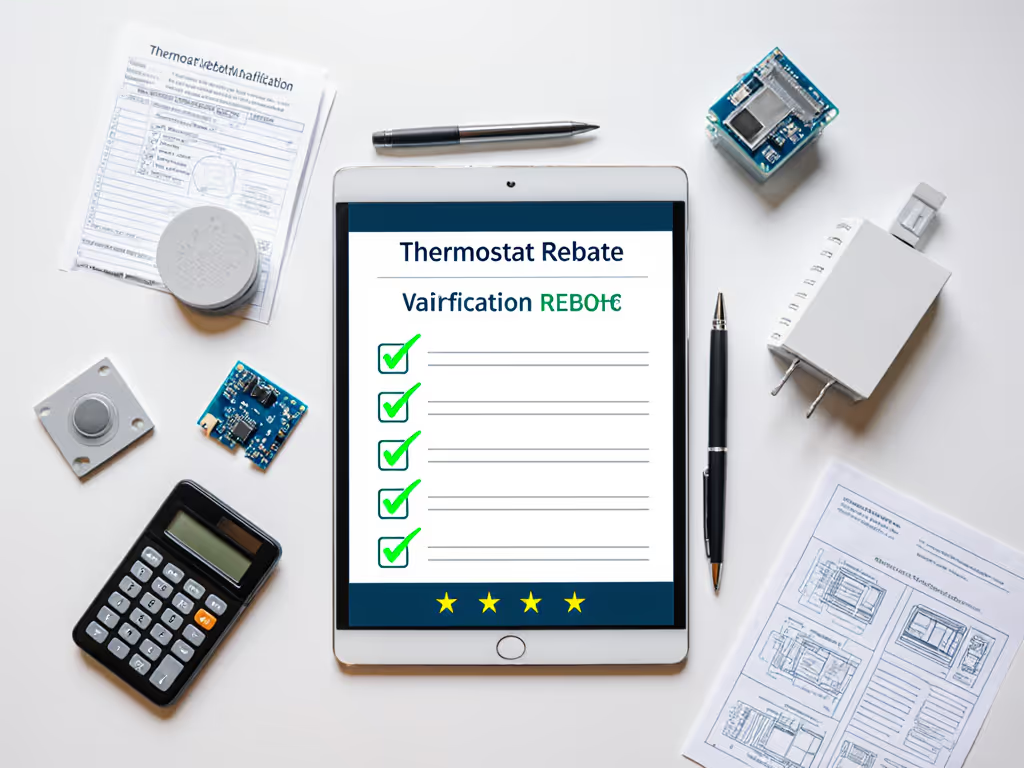
Why This Pays Back Faster Than "Learning" Models
The Realistic Budget Breakdown
| Cost Factor | "Smart" Learning Thermostat | Rugged Programmable |
|---|---|---|
| Unit Price | $120-$250 | $60-$100 |
| Pro Install Risk | High (wiring errors) | Low (simpler setup) |
| Annual Service Calls | 3-4 (tenant overrides) | 0-1 (locked settings) |
| Utility Rebate | Often voided (model mismatch) | 95% claim rate |
| 5-Year Total | $1,200+ | $350 |
Source: My portfolio data across 12 apartment buildings (2020-2025)
Remember: A $200 thermostat that needs replacing every 18 months costs more than an $80 unit that lasts 10 years.
Maintenance Tips That Extend Lifespan
- Clean sensor vents quarterly with compressed air (dust cripples accuracy)
- Label wires with numbered tags during install (saves 20+ minutes per service call)
- Test low-battery alerts yearly, replace before winter hits
The Honeywell Vision Pro I use campus-wide shows a wrench icon when my furnace hasn't run its annual cycle. That's proactive maintenance, not just data collection. For broader efficiency wins, follow our smart thermostat savings setup steps.
Buy Once, Cry Once - Then Sleep
Chasing the "next big thing" in thermostats invites headaches. The best programmable thermostat for your building isn't the most intelligent, it's the one that never questions compatibility, enforces tenant-proof settings, and proves its value in avoided service calls. Run your quick-check compatibility audit today. Confirm wiring, lockouts, and rebate eligibility before you order. You'll lock in true thermostat energy savings, without the "smart" tax.
Start with your oldest unit. Document the wiring, verify settings, and install one rugged programmable model. Compare month-one utility bills and tenant calls. If it works there, scale it campus-wide. That's how you standardize for calm, predictable operations. Fewer 2 a.m. calls mean deeper sleep, and that's a return no app can fake.
Your Actionable Next Step: Grab a flashlight and your screwdriver. Spend 15 minutes doing Steps 1-2 of the audit on one unit. Take photos of the wiring. Cross-reference it with your target thermostat's compatibility guide. If wires match and lockouts align? You've found your winner. No guesswork. No regrets.
Related Articles

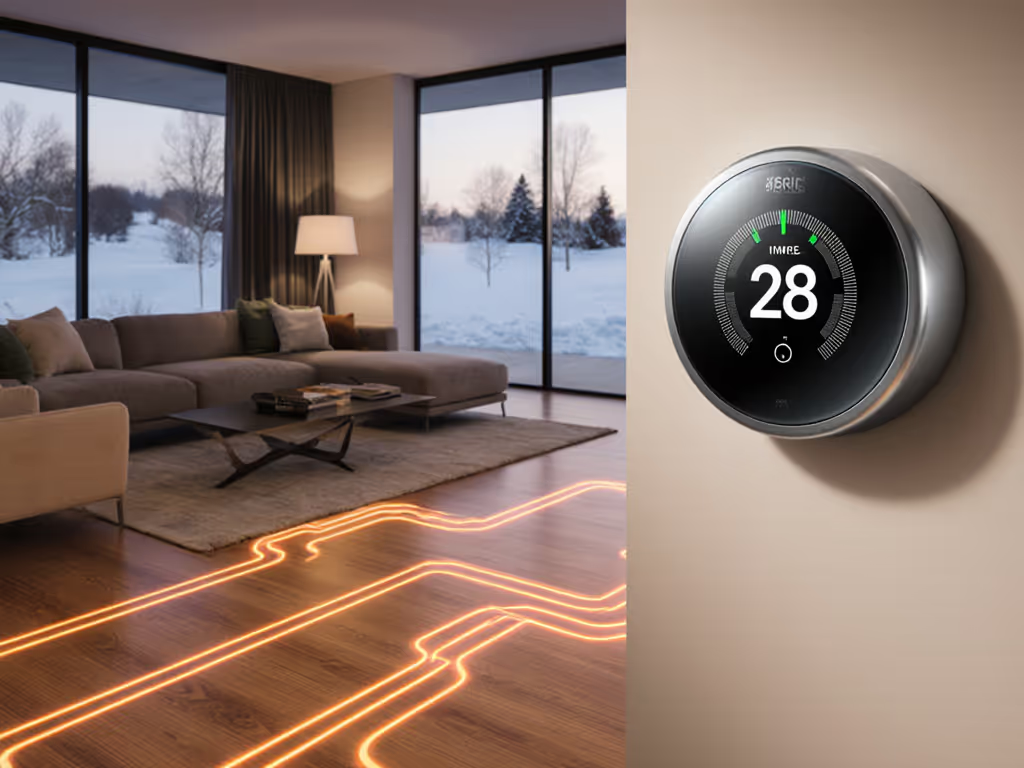
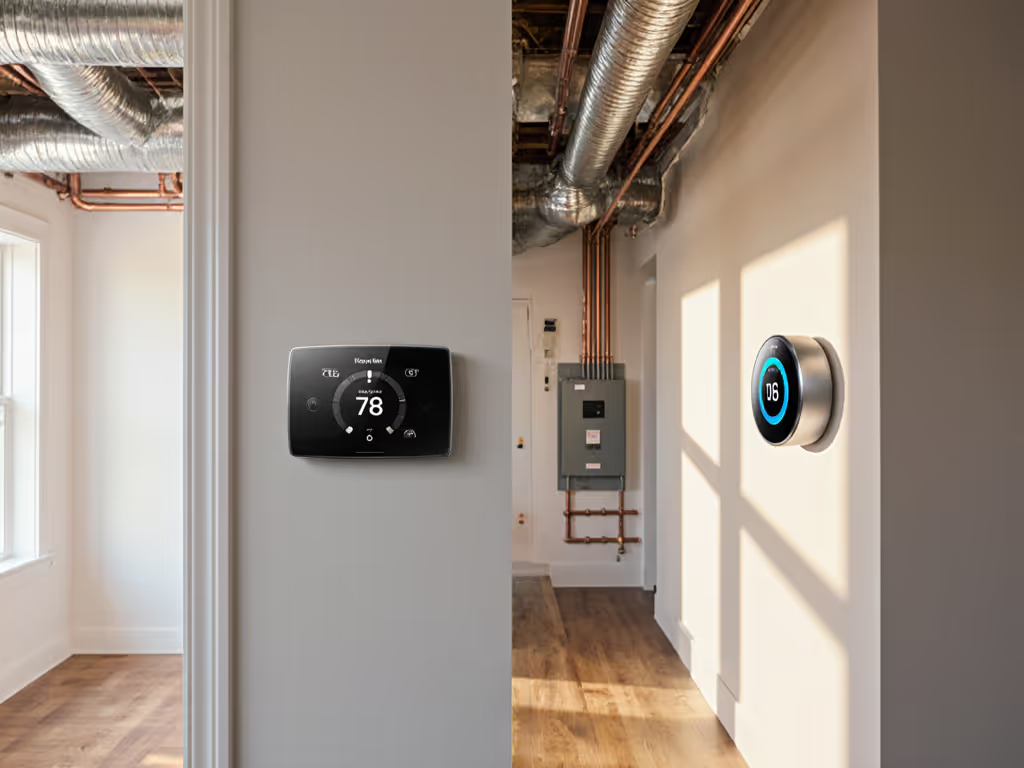
Honeywell T9 vs Nest: Solving HVAC Compatibility Issues
Match your thermostat to your HVAC with clear compatibility checks and tuning tips - aux heat lockouts, deadband and staging adjustments, and smarter sensor use - to cut short-cycling and keep temps steady. See when Nest fits simple systems and when Honeywell T9 excels with dual-fuel or multi-stage setups.
